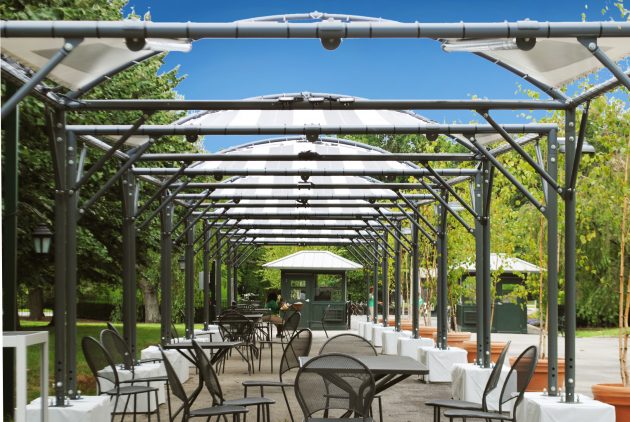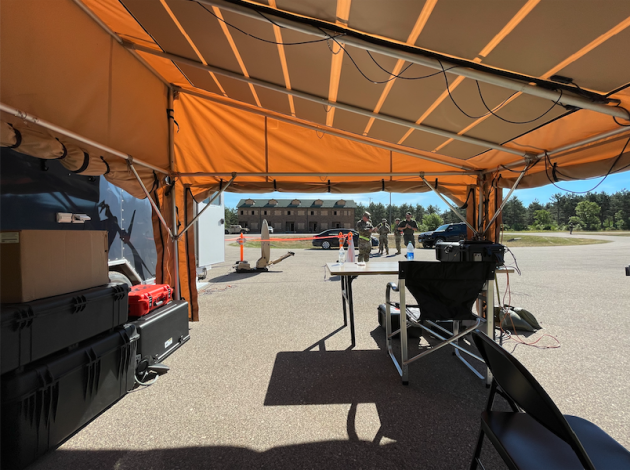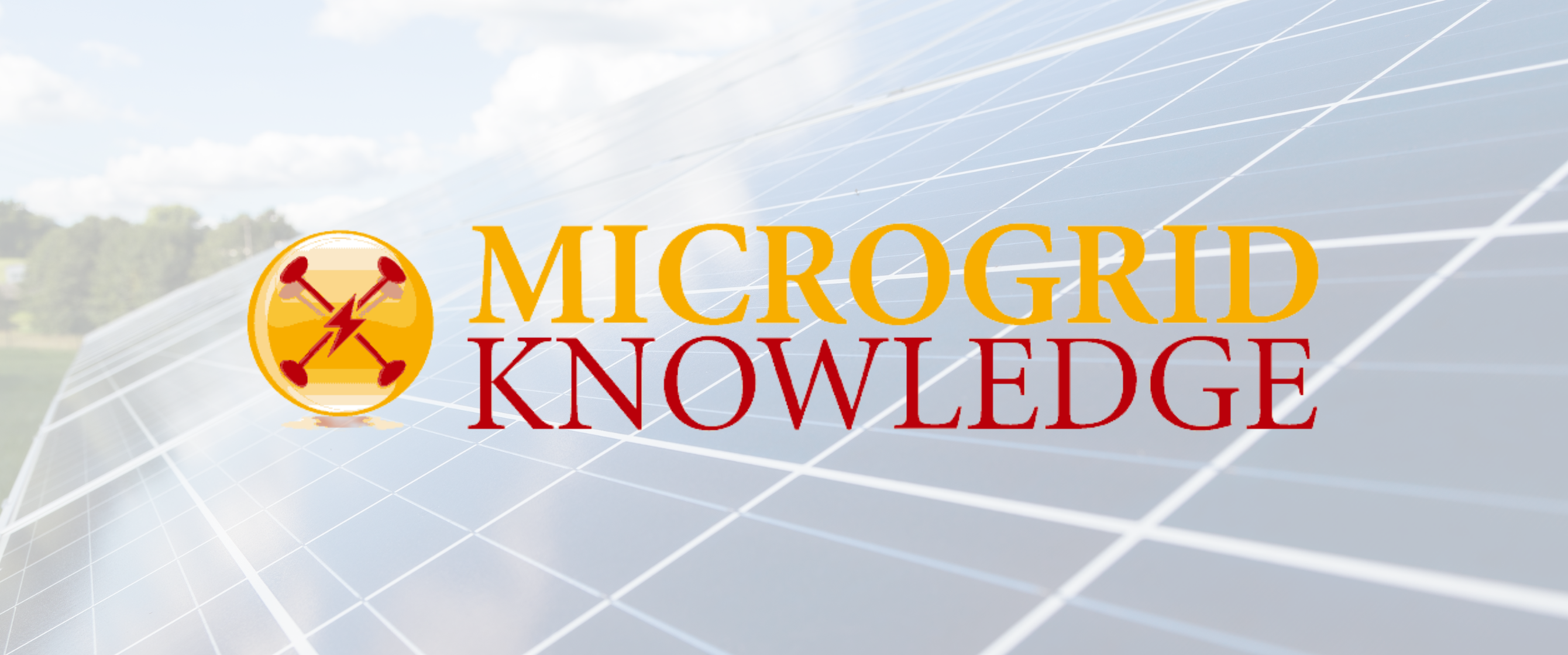Microgrid Knowledge | April 6, 2022 | By Elisa Wood
Energy flexibility is the new, new thing. And all microgrids offer it to some degree. But a small Brooklyn, NY, solar firm brings a whole new meaning to the term.
Imagine fitting 1.3 kW of solar energy in a golf bag and it’s so light you can carry it around for use where you need it.
That’s one of the value propositions that Pvilion is putting forward for its solar product, which houses crystalline silicon photovoltaic cells in fabric rather than the glass panels used for conventional solar installations. The result is a product that is lighter and more pliable than solar panels but produces the same amount of power per square foot, according to Colin Touhey, Pvilion co-founder and CEO.

The 12-employee firm is providing its solar fabric tents, canopies and sails for a range of applications — tentlike microgrids for the military, power stations for concert venues, disaster relief outposts and charging stations for commercial and public settings.
The New York Botanical Gardens features a seating pavilion with eight of Pvilion’s solar fabric canopies where visitors can relax in the shade and charge phones. Seven of the canopies feed into the grid while the eighth powers a battery bank. This type of installation, which costs roughly $10,000, emphasizes the architectural aesthetic that can be achieved with solar fabric.
Military Solar Fabric Microgrids
Under a contract with the US Air Force, Pvilion is developing more complex microgrid solutions — shelters that can be moved quickly and easily for a military on the move, yet provide enough power for modern-day work in a climate-controlled setting.
“We’re creating basically tent cities that are super robust and super high tech — not the MASH tents of the past,” said Touhey in an interview with Microgrid Knowledge.
The tents must offer what’s needed for contemporary work — power, thermal insulation, and sophisticated climate, heating and lighting control. To help the military achieve this in a tent, Pvilion has designed a hybrid solar fabric microgrid that includes generation, batteries, inverters and software and controls.
Because of their mobility, solar fabric microgrids also act as a fuel-saving technology when the military is undertaking humanitarian relief in remote locations, Touhey said. “Whenever the Red Cross is going in, they’re landing a plane and they’re landing a plane on a US government airstrip. That’s being built out and they need power. They need air, traffic control, satellites, radar communications. That requires a crazy amount of fuel in a traditional setting.”
Replacing the generators with solar fabric reduces the fuel needed, which frees up cargo space on planes for medicine, food and water.

Engineering Tents Like Skyscrapers
Pvilion’s roots go back several decades to a company owned by one of the founders, inventor Todd Dalland who now serves as president. Dalland brought computational analysis into the tent and fabric structures industry, a way of “approaching the structural engineering of a tent the way you approach the structural engineering of a skyscraper — with computers and analysis,” Touhey said.
That company produced materials used by NASA in the space shuttle and an early version of solar fabric that was featured in the Smithsonian’s 1996 future of energy exhibit. After several years of research and development on solar fabric, Pvilion was formed a decade ago to commercialize the product.
Pvilion has taken the slow road to growth, using no venture capital and experimenting in markets for its products that didn’t always pan out. Solar clothing is an example. Given that solar fabric the size of an 8×11 inch piece of paper can charge a cell phone, clothing would appear to be a good market, Touhey said. But Pvilion found major clothing designers fearful of risk and unwilling to place large enough orders to scale the products.
Now, however, a series of trends is working in the company’s favor and Pvilion forecasts that the next 12 to 24 months will bring a doubling of its $3 million-$5 million in annual sales.
Trends Favoring Solar Fabric
In addition to military and government contracts, Touhey sees potential for electric vehicle charging. Its solar fabric is already being used by a heavy equipment rental operation as part of a hybrid microgrid. Car dealerships could follow with mobile solar fabric providing them with flexible charging, particularly as they move vehicle displays around lots.
Building better spaces for socializing and dining outdoors, a trend begun during the pandemic, also lends itself to solar fabric installations. “People didn’t put an addition on the house. They put a pergola outside. There’s no reversing that,” Touhey said.
Lately, the company is fielding a lot of interest from municipalities in search of resilience and power for community spaces. For example, Pvilion is putting in solar canopies, engineered to withstand hurricane winds, in a New York City community garden.
“It will be to provide power to the folks who work in the community garden and spend their weekends there. But in the case of an emergency, like Hurricane Sandy, it’s a gathering space for the community to charge cell phones, get Wi-Fi, plug in laptops, get medicine,” Touhey said.
He describes such installations as a new kind of town square gazebo. “This is a gathering space. Well, why shouldn’t that be solar? Why shouldn’t it have plugs?”
Nothing Too Crazy
As practical as it sounds, solar fabric is different — a concept unfamiliar to most. The world is embracing solar panels and it’s clearly starting to get microgrids. Is it ready to accept solar fabric?
“We’re not really doing anything too crazy. We’re not inventing new materials. We’re inventing new applications of existing materials,” Touhey said.
Click here to view the original article.
 news + press
news + press
